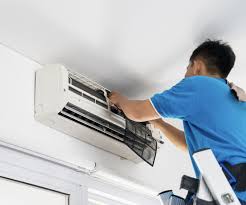If you have a basement or crawl space dehumidification needs, contact experts for a complete air quality inspection. A basement dehumidifier is an excellent way to improve indoor air quality by removing excess moisture from the air. Basement dehumidifiers come in many different types, models, and configurations, so it’s important to choose the right dehumidification and air purification services for your needs.
Most basement dehumidifiers are portable devices that fit easily in any corner of a crawl space or basement. Many basement dehumidifiers offer both air purification services and crawl space dehumidification to provide superior indoor air quality. There are some basement dehumidifiers on the market that are priced to fit all budgets.
Remove Moisture from Air:
When considering your dehumidification system, look for one that will effectively remove moisture from the air in your crawl space or basement. Air purification systems remove mold spores and bacteria from the air in your crawl space or basement. This will help eliminate or substantially reduce the number of allergens present in your air.
A good air quality inspection report should list all of the substances removed or reduced in the air. If there is a free estimate offered when you buy a dehumidifier, take advantage of this opportunity to get your air quality tested before making your purchase.
Mold and Mildew:
Many homes suffer from a problem similar to mold and mildew. This mold is a living organism that is growing inside of the walls, and in the roof above it. These organisms release toxins into the air, which can aggravate allergies and asthma, and make it very difficult to breathe.
There is no way to remove mold completely from your home, but using an air purifier can significantly reduce the mold growth in your air ducts. An air purifier will remove mold spores on a much larger scale than any individual appliance or filter could manage alone.
Inspect the Fault Part:
Dehumidifying an entire house is usually not necessary unless the surrounding area has a high concentration of moisture. Moisture can enter a house through a vent or other means. Homes in areas where there are basement leaks or pipe penetrations should have their air ducts inspected for leaks or cracks. In some cases, there may be nothing wrong with the existing air ducts, but the surrounding walls need to be thoroughly inspected.
Dehumidifiers can also be used to reduce humidity in the air coming into a home, which can be especially effective in humid climates where heating and air conditioning accounts for most of the humidity in the air. It can also help to prevent water pipes from freezing and bursting, which can lead to the leaking of water pipes and roofs.
Use the Principles of Dehumidification:
If you live in an area that experiences high levels of precipitation, then you should get an air purifier that is designed to deal with large amounts of moisture. These air purifying devices use the principles of dehumidification to remove excess moisture in the air. Dehumidifying appliances use two filters: one to remove the moisture in the air, and one to remove any airborne contaminants.
